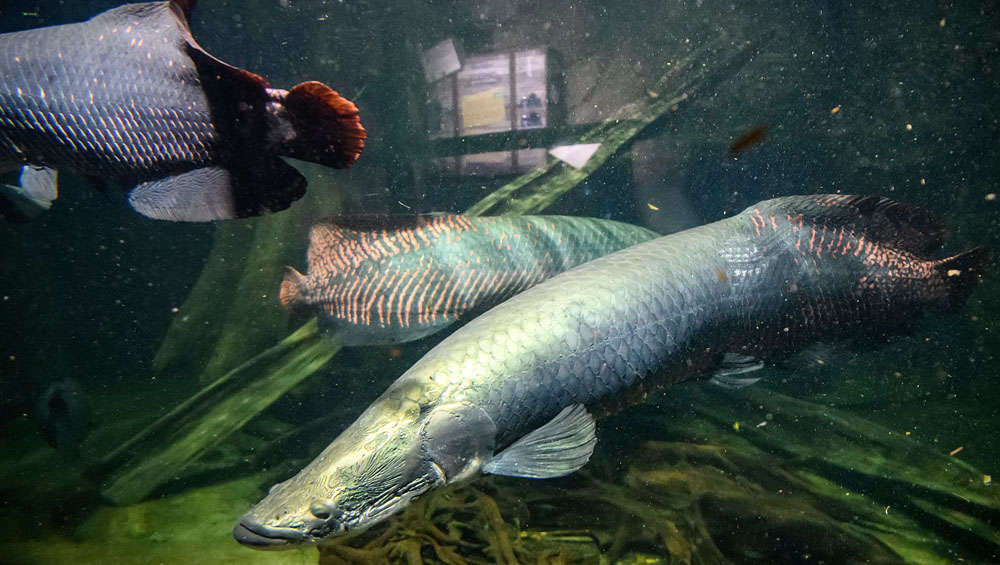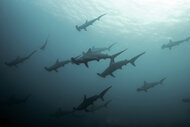Create a free profile to get unlimited access to exclusive videos, sweepstakes, and more!
Living-fossil fish eerily related to humans can tell us how vertebrates took over land

However knowledgeable Hellboy’s Abe Sapien is for an amphibious, human-fish hybrid, a creature like him isn’t exactly what our closest fishy relative out of water actually looks like (never mind that he could hang out in a tank or a living room). Think less humanoid.
While it’s not exactly a Victorian scientist like Abe (who was into arcane rituals and morphed himself into an ichthyo-sapien), the Australian lungfish has barely changed in 100 million years. It is also the living fish most closely related to humans and all other land-dwelling vertebrates. Sequencing its immense genome is now telling us how its lungs can be traced to the first vertebrates to ditch the water forever. Its genes are also giving away how its descendants evolved, especially in the limb department, to take over land. That was one of the most major evolutionary leaps ever.
Maybe the thought of swarms of fish walking out of water and colonizing land overnight is nightmare fuel, but it didn't exactly happen like that.
“Evolution tends to be conservative — since the organisms have to 'work' in every generation — and a tinkerer rather than an engineer,” evolutionary biologist Axel Konstanz, who recently published a study in Nature, told SYFY WIRE. “Certain genes like SAL1 and SHH are known to play a role in lung development in humans and mice, and we could show that they already do in lungfish.”
Back up for just a second. Before something is even born, a group of genes including SAL1 already have the instructions for making the proteins that will form its organs and tissues. SAL1 transcribes that information by binding to certain parts of DNA. This way, those parts can control other genes associated with organ and tissue formation. It also interacts with proteins to switch off some potential things genes could do. This also regulates the way genes are expressed. SHH also carries instructions, but for making a different protein that boosts the growth, cell specialization, and shape of the body, especially targeting brain and spinal cord development.
The Australian lungfish genome has more than 43 billion DNA components. It beats the human genome 14 times over, which now makes it the largest animal genome ever. Also known as Neoceratodus forsteri, it is an actual living fossil that appeared about 100 million years ago and hardly changed from the extinct Ceratodus lungfishes that emerged in the Devonian period, around 420 million years ago. There is thought to have been at least one prehistoric lungfish lineage that left the water and never looked back.
It was this mysterious life-form that gave rise to all tetrapods, which include everything from amphibians (not a far reach since lungfish behave more like salamanders than fish) to reptiles, birds, and mammals — including us. Granted, Meyer does not believe a lungfish is the exact definition of what we usually think of as a fish.
"'Fish' is a very imprecise term," he said. "Phylogenetically speaking, we mean 'fish.' Among so-called 'fish' that are still around, the coelacanth and the lungfish have long been contenders for being the closest living relatives to the tetrapods, which was highly debated until DNA data became available and the lungfish began to gain more support."
To get through this nearly insurmountable genome, Meyer and his team tested where and when certain genes are switched on in Australian lungfish embryos. These genes were particularly used for developing the extremities and fingers in mice and humans. Proving that lungfish used the same mechanism was proof that patterns seen in tetrapods were already present in the lungfish when one of its ancient lines made the transition from fins to limbs. The team also searched for genes that control rogue DNA segments which repeat themselves and make genomes blow up. Surprisingly, that wasn’t happening.
“It is fascinating that evolution does not seem to have a tighter grip on controlling the size of genomes. It should require [much more] energy to make so much ‘useless’ DNA in so many cells of the body, but that does not seem to be the case,” Meyer said. “There is still much to be discovered and understood here.”














